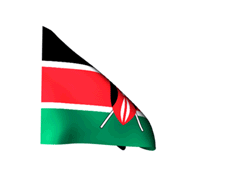GOVERNMENT LAYS DOWN INSTITUTIONAL FRAMEWORK AND INFRASTRUCTURE FOR WELFARE OF WOMEN AND CHILDREN

In the recent years, the Government of India has initiated and expanded a number of schemes for welfare and upliftment of standards of living of women and children across the country including cash incentives for opening of bank accounts, facilities at creche, schools, communities, rehabilitation centres, non-governmental organizations (NGO), one-stop centres, etc for nutritional support, health education, skill training, welfare of neglected and abandoned children, ensuring availability of police, medical, legal, and psychological support and temporary shelter to children and women affected by violence, etc.
In view of implementation of the aforesaid schemes, the Government has laid down the following institutional framework and infrastructure that would enable women and children suffering from all forms of violence to approach such institutions and resolve their issues:
1- Care homes, open shelters, adoption agencies and other rehabilitation centres-
The Central and State Governments/Union Territories (UTs) have enabled the setting up of various child care institutions including care homes, observation homes, special homes, open shelters, adoption agencies and other rehabilitation centres, for the well-being, care and protection of children in distress as provided in theJuvenile Justice (Care and Protection of Children) Act, 2015, Protection of Children from Sexual Offences (POCSO) Act, 2012, etc. These children would be rehabilitated through vocational training, recreation, health care, counselling, adoption, foster care etc.
In this regard, the State of Tamil Nadu has released the highest amount of funds of Rs. 14,915.36 Lakhs in the year 2019-20 for child care and protection. Whereas, the State of Maharashtra has enabled the setting up 55 observation homes, i.e. the highest number of such child care institutions, as on 30-01-2020.
Further, the State Governments, UTs, National Commission for Protection of Child Rights and State Commission for Protection of Child Rights have the responsibility to oversee, monitor and inspect the child care institutions to prevent sexual exploitation and harassment of children in such institutions.
2- One-stop centres for aggrieved women-
The Government has implemented 680 one-stop centres, popularly known as ‘Sakhi Centres’, across 35 States/UTs as on 01-02-2020, to provide one stop facility of police, medical aid, legal aid, legal counselling, psycho-social counselling and temporary shelter, to women affected by violence. These Sakhi Centres are generally located within 2 km radius of hospitals or other medical centres. The State of Uttar Pradesh has 75 Sakhi Centres, i.e. the highest number of operational one-stop centres as on 07-02-2020 in India.
3- Swadhar Greh-
The Government has set up Swadhar Greh in most of the districts, to target women victims in distress including trafficked girls and women, and those who have been deserted, who have survived natural calamities, who have been released from prison, who have been suffering from domestic violence, etc. Swadhar Greh enables such women to find shelter, food, clothing, health and hygiene, economic and social security, etc. So far, Swadhar Greh have been established in Andaman and Nicobar, Meghalaya, Nagaland and Mizoram, as on 07-02-2020.
4- Empowered Committee (EC) of Officers under Nirbhaya Framework
The Empowered Committee (EC) of Officers constituted under Nirbhaya Framework reviews and recommends projects and proposals for funding under Nirbhaya Fund. So far, the Ministry of Home Affairs has utilized the highest amount of Rs. 39,155.12 Lakhs, out of the Nirbhaya Fund, in Delhi in 2019-20, for various projects/ schemes pertaining to the welfare of women and children.
5- Anganwadi Centres
The Ministry of Women and Child Development has provided for construction of 4 lakh Anganwadi Centre buildings across the country, which provide services of nutrition, pre-school non-formal education, health education, immunization, health check-up, etc to children in the age group of 0-6 years. The Government has approved set up of 15000 units of Anganwadi Centres in Punjab, i.e. the highest number of units so far approved, as on 07-02-2020.
6- Mahila Shakti Kendra
The Government has set up various Mahila Shakti Kendras to empower rural women with opportunities for skill development, employment, digital literacy, health and hygiene, nutrition social security, gender rights, poverty alleviation, etc. The Government has so far granted the highest amount of funds of Rs. 105.81 Lakhs to the State of Tamil Nadu under this Scheme.
Thus, as per the Global Gender Gap Index (GGGI) published by the World Economic Forum in 2020 and the Ministry of Women and Child Development, India has been ranked at 112th position out of 153 countries, based on the continuous efforts that the Government is making towards upliftment, empowerment and development of standards of living of women and children in India. It is also believed that such Government initiatives would continue to benefit a number of destitute women and children at the grass root level and beyond.
Harini Daliparthy
Senior Legal Associate
The Indian Lawyer




































Leave a Reply